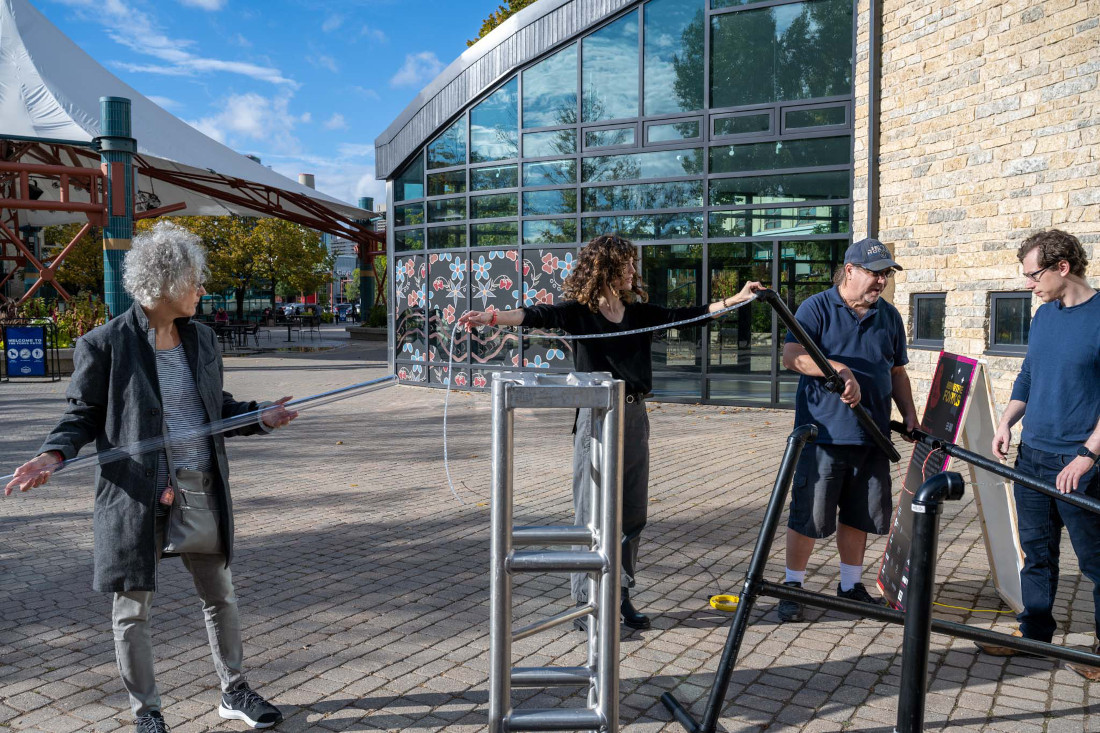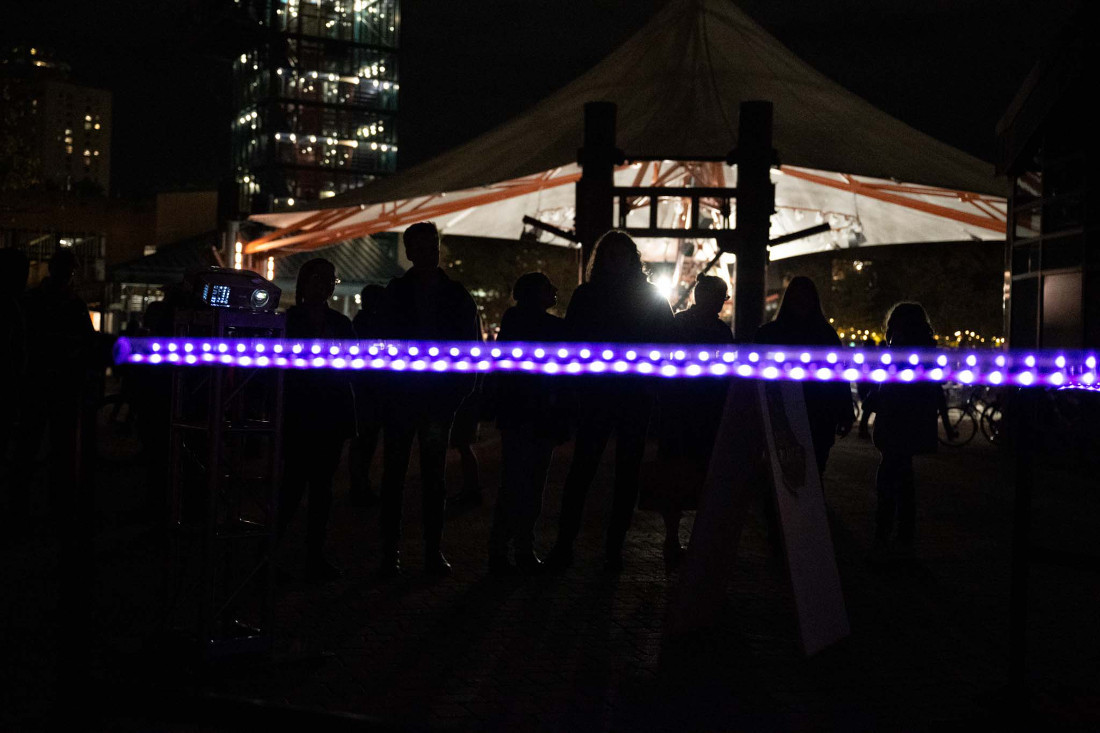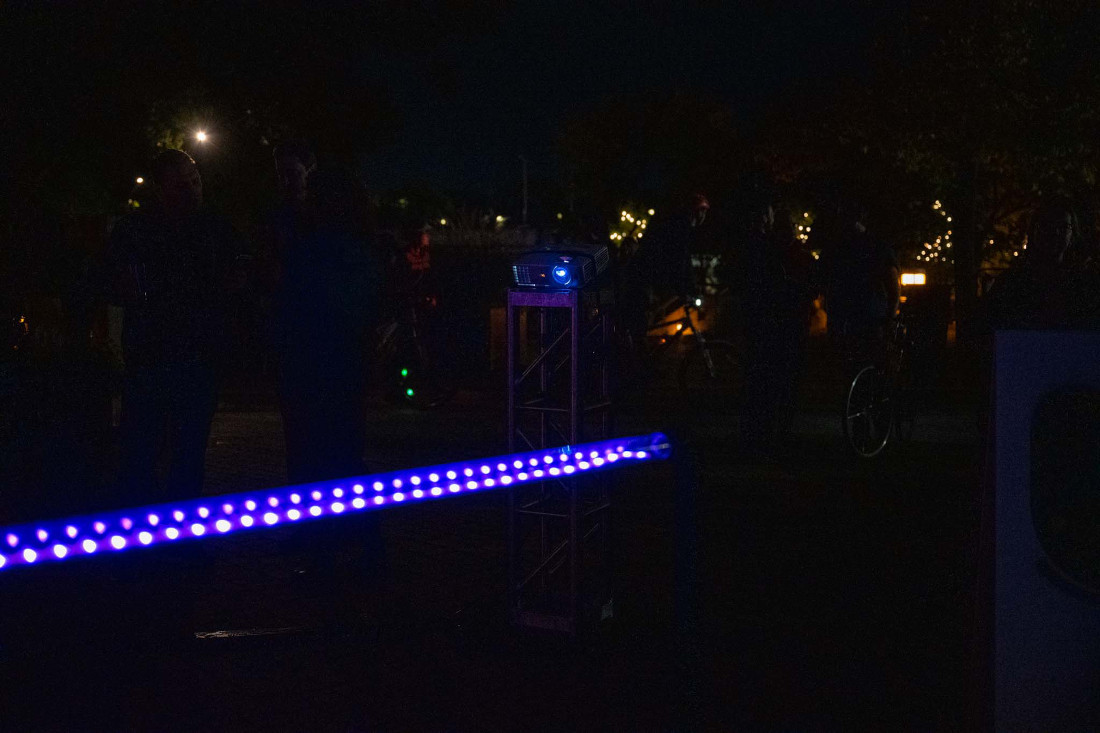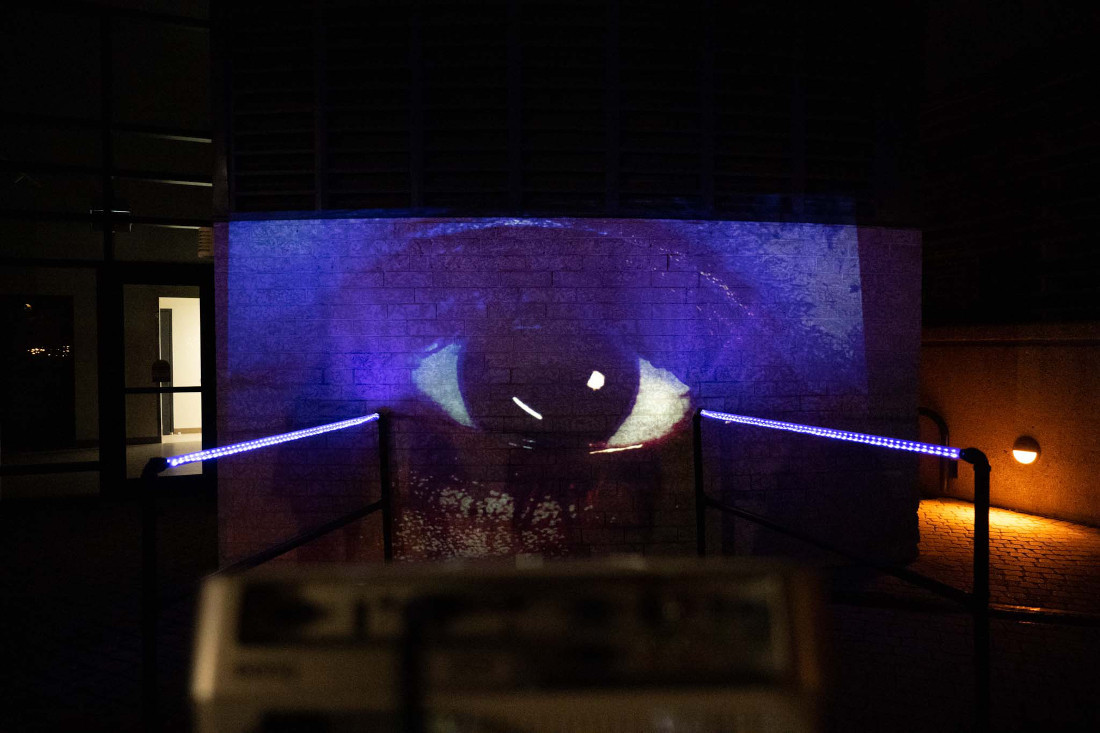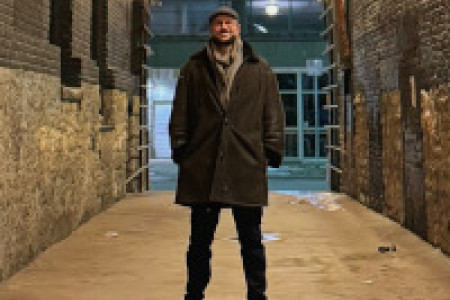Observe & interact
The nuts and bolts of Nuit Blanche
Melanee Tessler with some of her raw materials.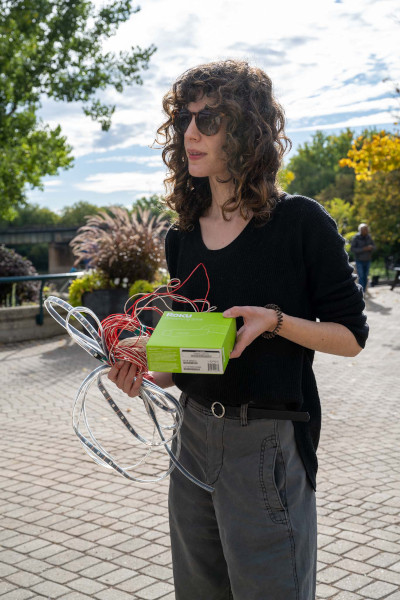
Tessler sets up for her first Nuit Blanche, the annual nocturnal carnival of public art and partying. This is her second foray into art installations. The first was a hanging mobile with biology slides in the form of a rainbow trout.
Her new piece is called Please See Me. It’s a projection of a blinking eye, overlaid with animation created with Adobe After Effects. The LED light strips are timed and encapsulated within a rail constructed of clear plastic tubes and black PVC pipe.
The themes of Please See Me fall under the umbrella of mental health.
The team feeds a string of LED lights through clear tubes.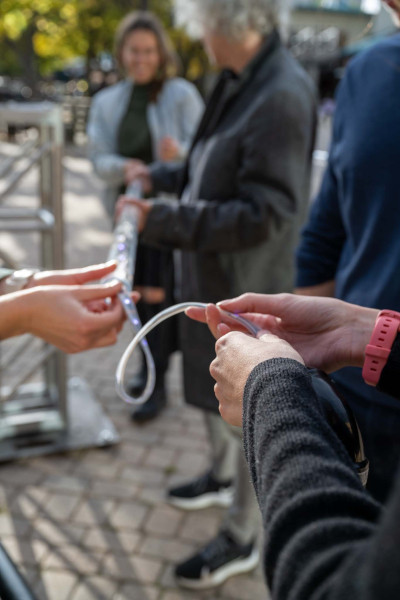
Tessler says the idea to focus on mental health came first. Next, she had to figure out how to make it more interactive.
She wanted viewers to be “more in the moment ... so I had to play around with a few different ideas on how to set up the lights.”
As part of the application process for Nuit Blanche, Tessler had to provide a budget, timeline, project description, biography, images and video.
“An image or video of what you are planning to do is a huge help, so that (organizers) understand what the project is,” Tessler says.
Tessler enlisted her friend Nico Richard to help program the Arduino chip, which controls the installation’s lights.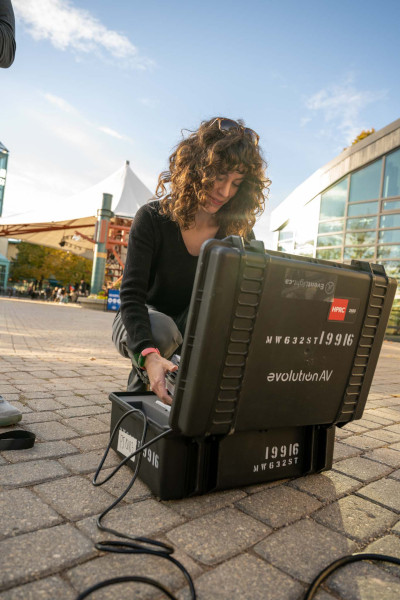
“I wanted the lights to be blue- and purple-tinted, so I used that as a fill light to add dimension to the video,” Tessler says.
The timed lights proved to be a challenge. Tessler enlisted the help of her friend Nico Richard with programming the Arduino chip, which controls the lights.
“I got a chip and went to an electrical store to get a breadboard and wires and set it up. The actual programming part I needed help with. Then I had to sync it up with this program called Touch Designer,” Tessler says. Artists use Touch Designer to aid in the development of their pieces.
While directing people how to feed the light string into the tube, Tessler’s mother Shari Kowall quips, “It takes a village.” It takes seven people, including Tessler, to set up.
“It was a big learning curve,” Tessler says.
Published in Volume 77, Number 04 of The Uniter (September 29, 2022)

